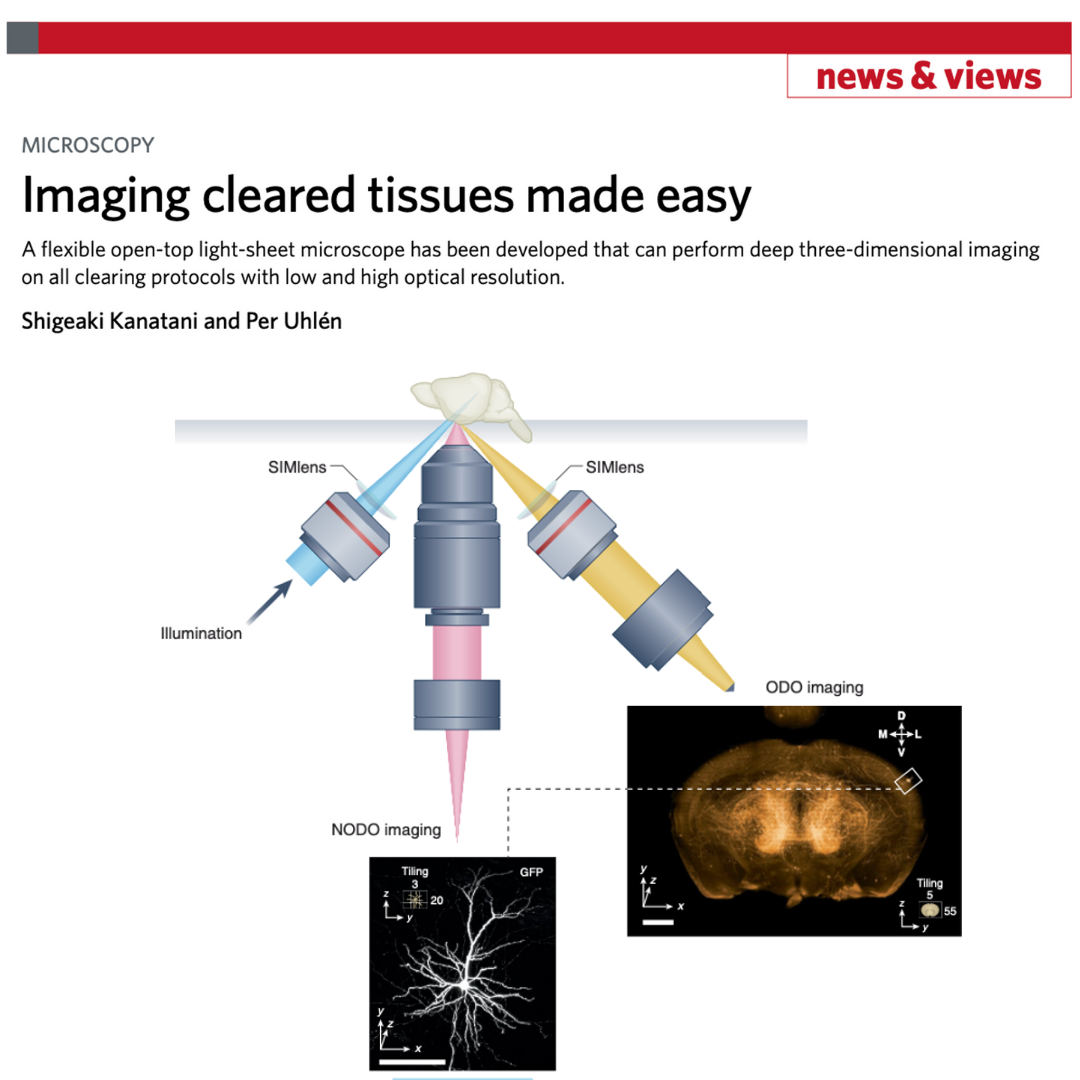Nature Methods perspective article describes how Alpenglow's 3Deep Imager makes 'imaging cleared tissues easy'
Researcher Shigeaki Kanatini and Professor Per Uhlen from the Karolinksa Institutet in Sweden outline the advantages of Open Top Light Sheet (OTLS) Microscopy in this recent Nature Methods perspective article. The researchers describe five unique advantages of the system over other commercially available solutions and emphasize the incredible flexibility of the imaging platform. Multi-sample imaging, compatibility with all clearing protocols, unlimited lateral specimen size and unique multi-arm imaging resolution options are among the favored attributes of the design. Capabilities like 3D imaging of intricate details, such as molecules and single cells, and of biological structures (for example, tumor vasculature) in intact and undamaged tissues, as well as high-throughput, cell-by-cell analysis of spatial location are also mentioned. The only drawback to the system which the authors could find is the resolution, which has since been improved in the commercialized version of Alpenglow’s 3Deep Imager to 0.17 microns, allowing for subcellular resolution and competitive with confocal microscopy. Alpenglow is riding the wave of three converging technology trends to deliver an unparalleled drug development solution; wide adoption of clearing techniques, proliferation of AI-powered image analysis, and finally, patented open top light sheet imaging platforms like the one profiled in this article.
Read the full article

